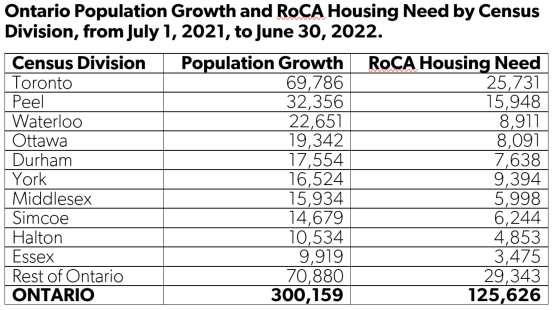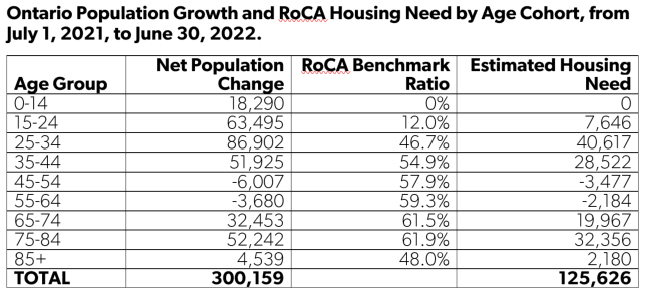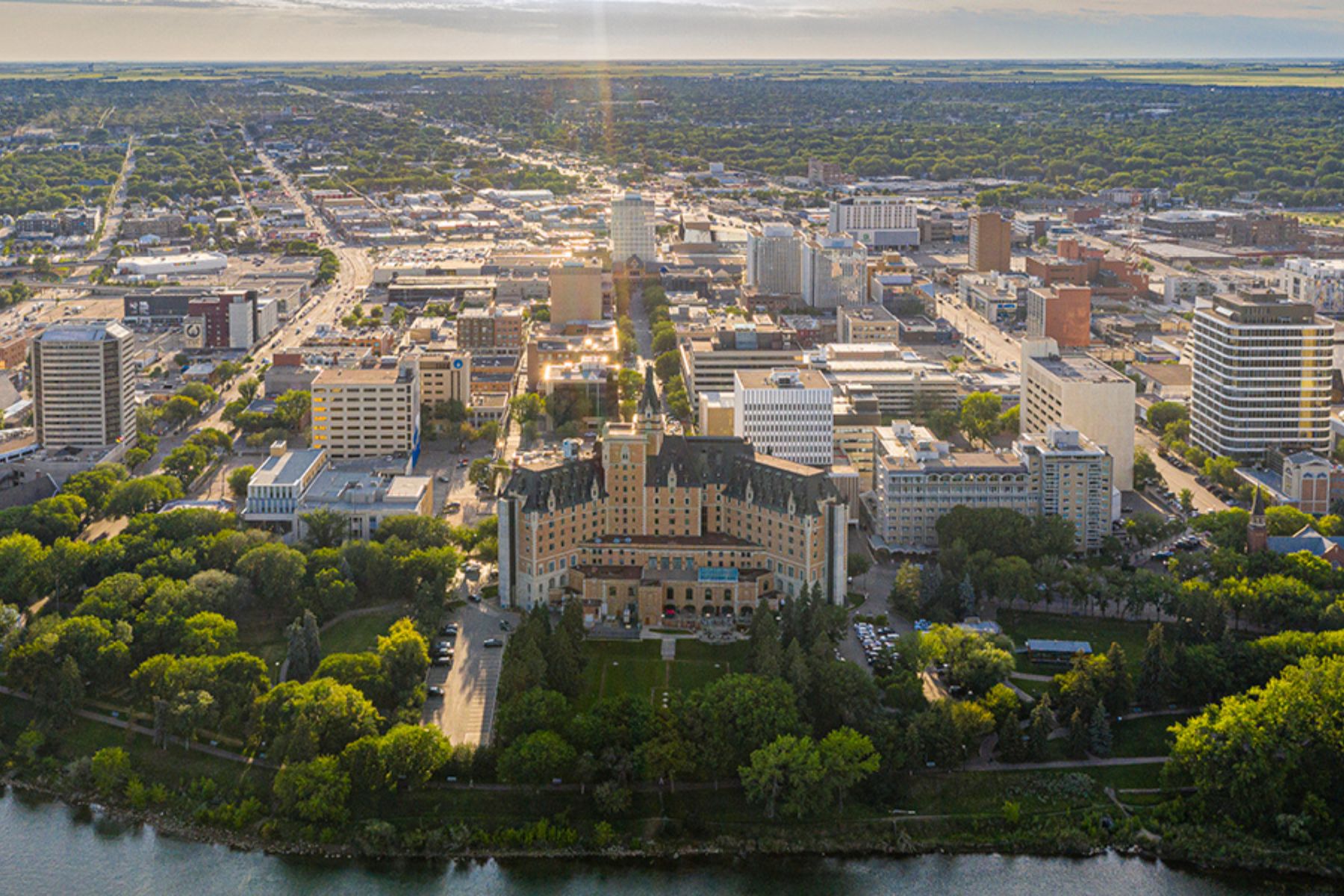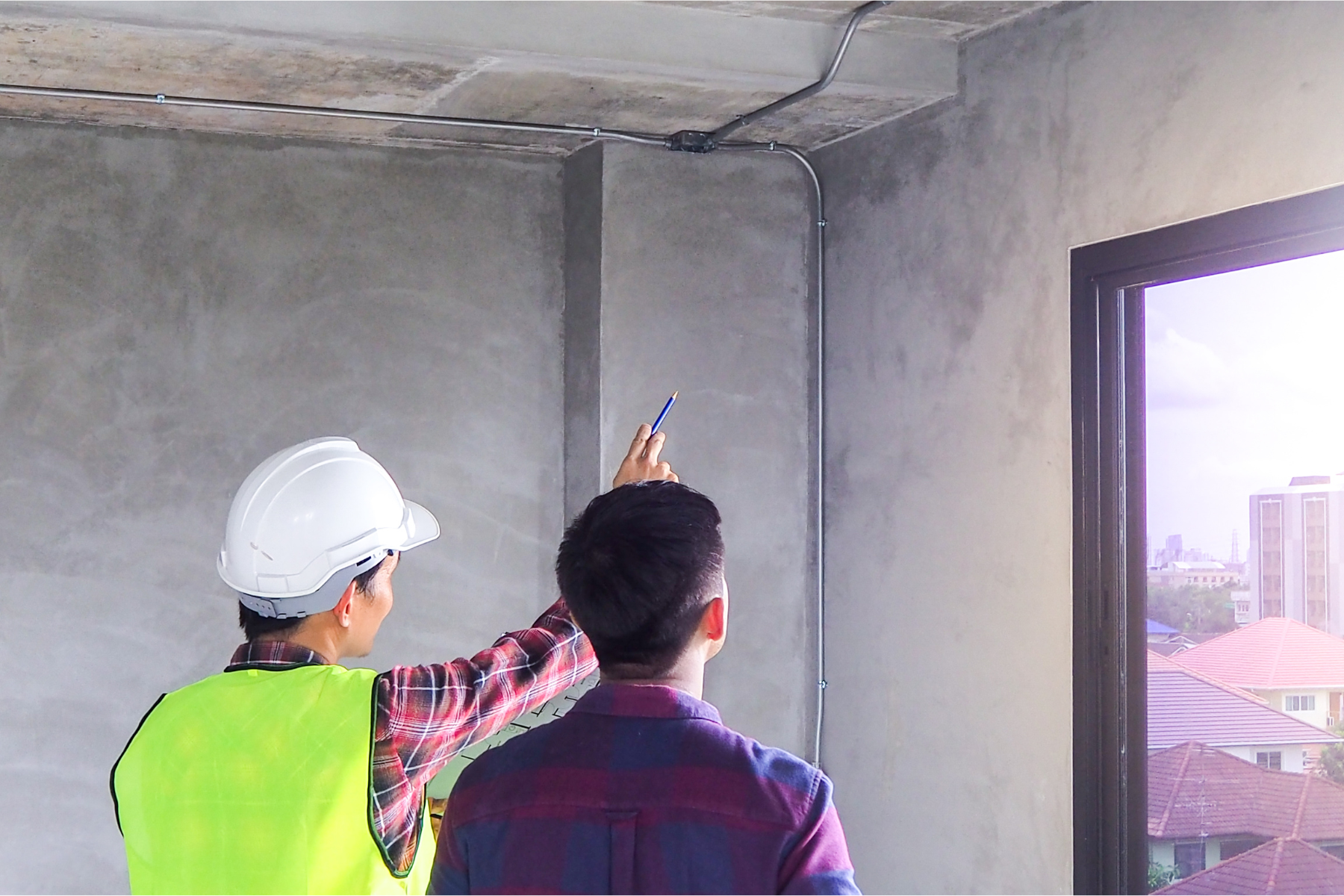Today, Statistics Canada revealed that our past projections for homes needed were too low for 2021-22, as Ontario's population continues to grow.
The Ontario government and the Smart Prosperity report Ontario’s Need for 1.5 Million More Homes suggest that Ontario needs 150,000 homes annually to keep up with population growth, demographic change, and the pre-existing housing shortage. New population data released today from Statistics Canada finds that last year, the need was even greater, as the province's population grew by over 300,000 people.
Translating population growth into the demand for housing is not a straightforward process, as there is no linear relationship between the two. A family welcoming a second child does not change the number of homes needed but does increase the population by one. Similarly, an adult child wanting to move out of their parent's home does not increase the population but does increase housing demand. Age matters.
In our 1.5 Million More Homes report, we developed the RoCA Benchmark, which converts population by age to housing demand. It uses the average age-adjusted housing levels in all of Canada, excluding British Columbia and Ontario (which we call the Rest of Canada, or RoCA), from the 2016 Census. The 2016 Census was used as it was the newest data available, and British Columbia and Ontario were excluded as they suffer from chronic housing shortages. The RoCA Benchmark states that a 100-person increase in the population of those aged 15-24 requires 12 new homes, whereas a 100-person increase in the population of those aged 35-44 requires 55 new homes; see the bottom of this blog post for the whole relationship.
The RoCA Benchmark is a simple measure by design, so there is a lot it doesn't consider. It treats all homes (or housing units) as functionally equivalent, though naturally, a 3-bedroom apartment can house more people than a 1-bedroom basement suite. It does not consider the home's affordability, the building's environmental footprint, or the walkability of the neighbourhood in which the home is located. It also does not consider potential cultural preferences for adults to live in smaller or larger groups. Despite these limitations, it helps estimate how population and demographic changes translate into housing needs.
Our 1.5 Million More Homes report found that Ontario needs to build 47,000 homes a year for the next ten years to address pre-existing shortages, a phenomenon we examine in Housing Shortages and Affordability in Canada. We calculated that Ontario also needs to build 103,000 homes a year to keep up with the Ontario Ministry of Finance's projected population growth and demographic change for the province. Today, Statistics Canada revealed that those projections were too low for 2021-22, as Ontario added tens of thousands more persons than was projected. This causes the province to need 125,626 homes, rather than 103,000, just to prevent housing shortages from getting worse.
Using the RoCA Benchmark, we found that this creates the need for 125,626 additional homes, with the demand being highest in the City of Toronto, Peel Region and Waterloo Region, as shown below.

This level of housing demand poses a challenge, as only 75,101 new housing units were built in Ontario in 2021-22. The province has never built 125,000 new homes in a single year, with the current record of 106,353 set in 1973-74, the only year Ontario housing completions exceeded 100,000 units.
Ontario's housing challenges are substantial. Policymakers at all three levels of government must address these shortages to create the kinds of affordable, accessible, and climate-friendly communities needed to ensure a high quality of life for all Ontarians.









